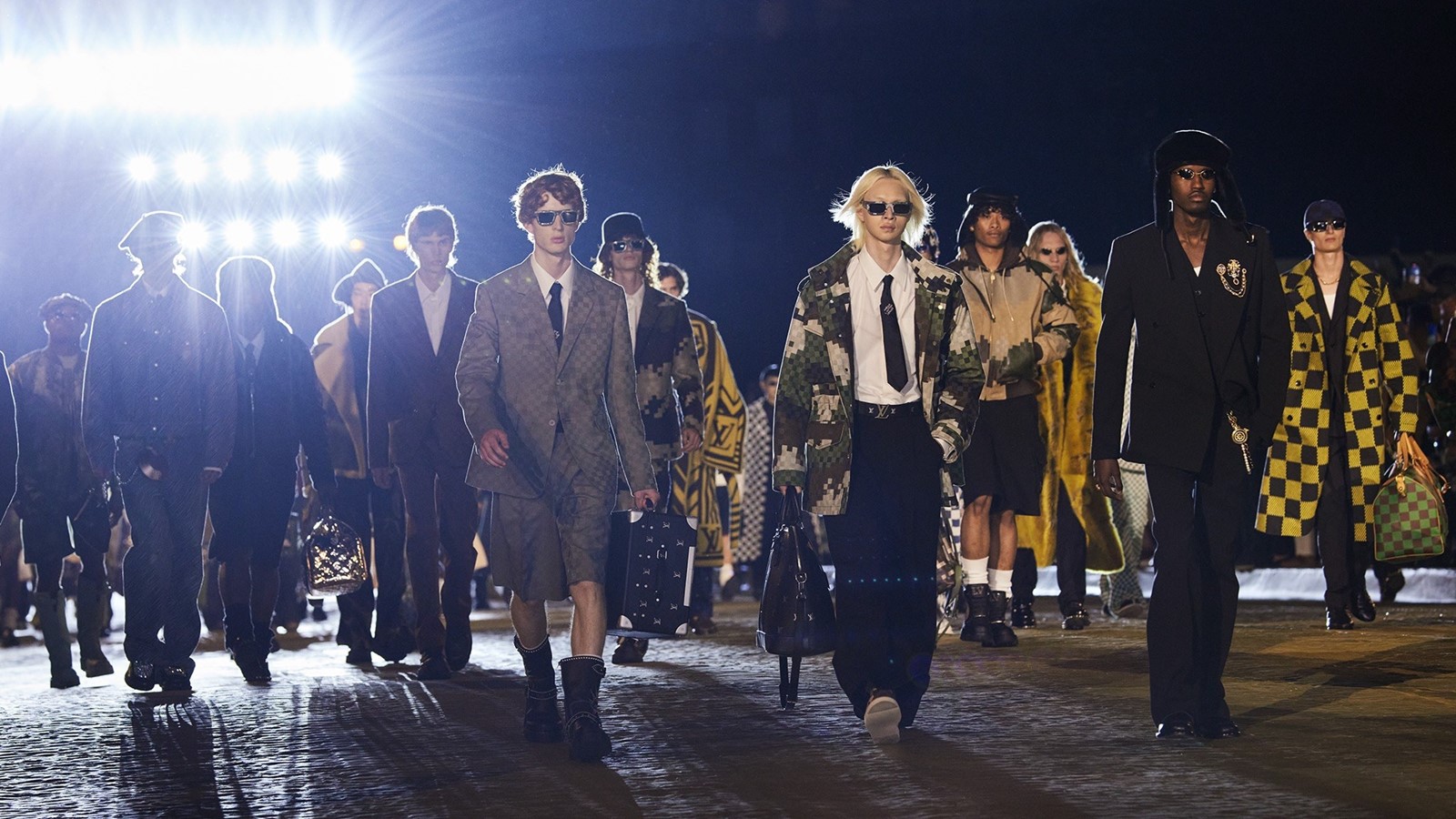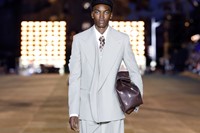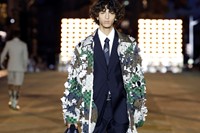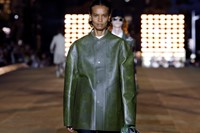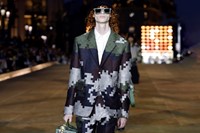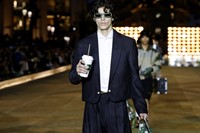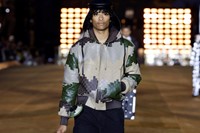Pharrell Williams’ debut collection for Louis Vuitton would, inevitably, be the event of the Spring/Summer 2024 menswear season. An appointment that reflected, maybe, the shifting poles of the idea of a fashion house’s creative director over the past two decades – from a designer of clothes to a maker of fantasies, disseminated across multiple platforms and mediums with all the pyrotechnics of a blockbuster musician’s world tour – the appointment of Williams as Vuitton’s head of menswear wasn’t exactly unprecedented. Nevertheless, it was the first, and it was big – an already global megastar from outside the world of fashion appointed to lead a luxury house’s menswear offering.
A week before his show, Williams is talking in his studio on the rue Pont Neuf about what his ideas are of Vuitton. He doesn’t let slip that, seven days later, the show itself will be taking place on the bridge this road is named after, visible from the windows but given a makeover in glistening, sunny gold Damier-print. “For so long I have been talking about how the sun is shining on us with this appointment,” says Williams. “Clearly the sun is shining on me and everybody that’s on my team.” Oh, he also timed his show to take place bang-on sunset (it ran a few minutes late, as fashion shows tend to). The sun means big stuff in French culture: Louis XIV, the monarch who shaped France’s identity more than any other – and whose 72-year reign is still unchallenged as the longest in European history – is still dubbed the Roi Soleil, habitually painted with sun rays beaming out from his face. Williams is associating himself with the best of the best, in the maison that bears Louis’ moniker too. And Williams, later, will wear a jacket studded with the words ‘Pupil’ and ‘King’. “When I was given this position to rule, I accepted it, knowing that I was going to be a perpetual student,” he says.
But back to Paris and those windows – one of the inspirations behind Williams’ menswear debut. “I look out of these windows every day, and there are big paramount vistas that come out of it in terms of the vision,” he says. “But then when you zoom all the way into a granular detail, it’s inspiring it because I’m in this air. This is where I’m living and sleeping and dreaming and eating and breathing every day, and so is my team. It’s shifted all of our lives.” Williams even sent out stained-glass windows as his invite, featuring the Pont Neuf, to connect everything together again.
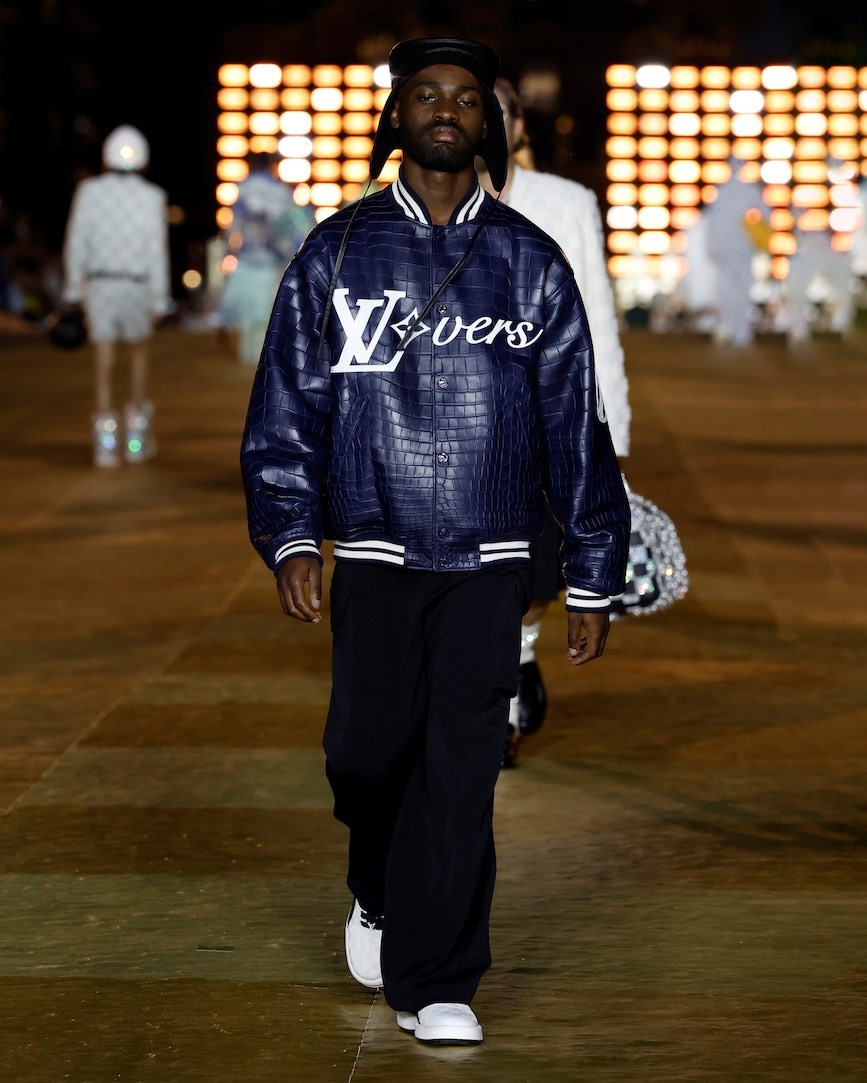
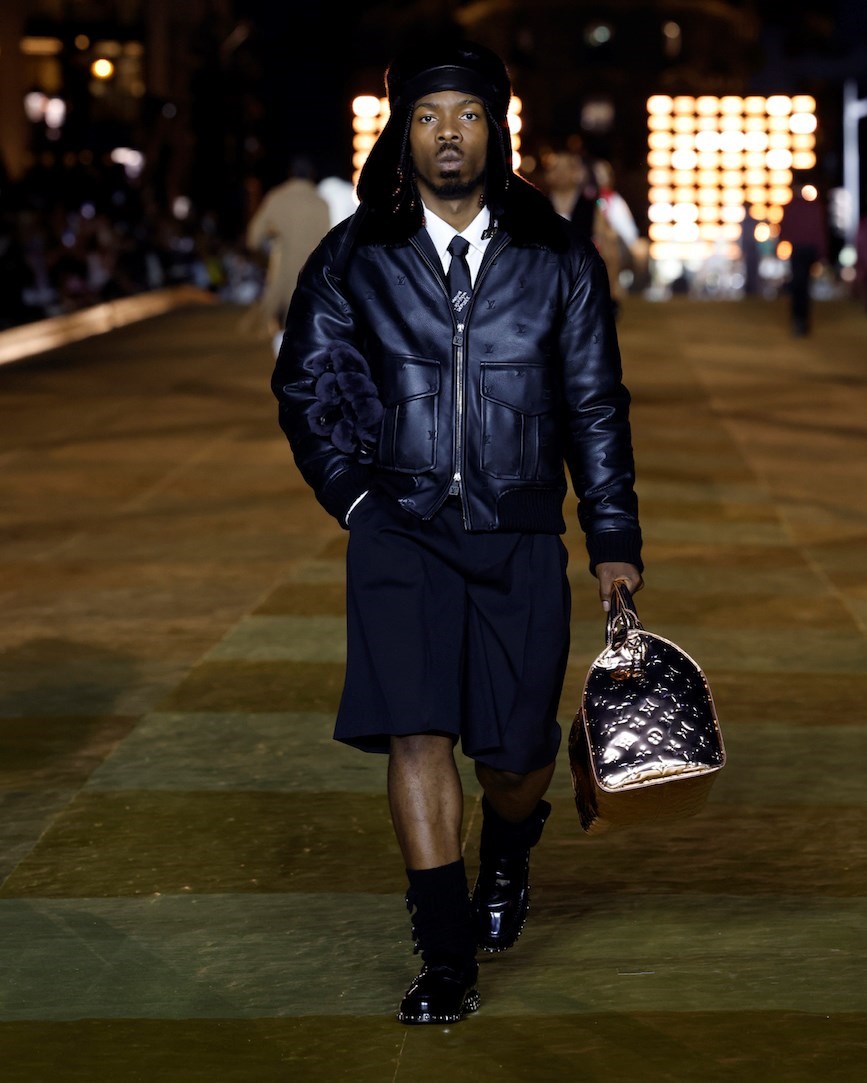
Connection was an important idea: for Williams, the bridge was a symbol of linking together two disparate locales – in his instance, Virginia, where he grew up, with Paris. The 1969 tourism and travel state slogan ‘Virginia is For Lovers®’ became ‘Virginia is for LVERS’, a play on words but also an encapsulation of what Williams wished the brand to stand for. “When you just look at it and you zoom in on that word, ‘lovers,’ it encapsulates the vision even more clearly,” said Williams. “That this was a moment that we all appreciate – there’s a lot of people that we appreciate, the process, the opportunity, and even down on a consumer level, if you love this house.”
The Spring/Summer 2024 menswear show itself was a love-letter to LV – who Williams first worked with, when helmed by Marc Jacobs, to design the brand’s ‘Millionaire’ sunglasses in 2004. Vuitton iconography emerged thick and fast onto the Pont Neuf – the Monogram, of course, alongside the checkerboard pattern they call Damier, the Karakoram blanket patterns and plenty of trunks. Each were reiterated, exploded and explored – the Damier came in multiple colours, embroidered with pearls, or reworked into ‘Damouflage’ or forming pixellated artworks created by American creative ET Artist. The Monogram, meanwhile, was printed on leather rather than canvas in bright, happy primary and secondary shades – as already-famously clutched in a preview advertising campaign starring Rihanna, in full view as guests made their way down the Seine to the Pont.
But, generally, the most interesting idea of Vuitton that Williams explored was its universality – how Vuitton has a connection and meaning to many, as luxury they aspire to, and perhaps as luxury they may own. “It is a brand that is of the people, truly,” he says. Williams referenced the world of Canal Street rip-offs and Dapper Dan’s “knock-up” logo pieces, appropriating Vuitton’s marques of luxury for different audiences – their fundamental recontextualisation of these symbols of European elitism to mean something new. Interesting, Williams’ approach has a parallel with that of his friend and mentor, the late Karl Lagerfeld – whose early 1990s collections took inspiration from Canal Street’s counterfeit Chanel pieces – most memorably, a cross-breeding of the Chanel logo with Calvin Klein’s logo’ed underwear – and reinterpreting them as real luxury pieces. Williams is playing a similar game, in a sense, celebrating the ingenuity of the hustle, and also embracing that, when your logo is faked, it means you’ve made it.
Vuitton is, of course, recognised around the world, in every walk of life. Which is something Williams embraced, and celebrated. His show audience was packed with celebrities – Beyoncé, Jay-Z, Rihanna, A$AP Rocky, LeBron James, Tyler, the Creator, Zendaya, Kim Kardashian, Megan Thee Stallion … the list continues, endlessly. Yet none of them outshone Vuitton, a megastar of fashion, another name known globally. And Vuitton itself becomes a platform to expand minds and empower communities. Included in the show is a collaboration with the artist Henry Taylor, whose artworks – portraits of key inventors – feature on Alma bags. Alongside celebrating the work of other creatives, like Dapper Dan – and indeed honouring the legacy of his predecessor, Virgil Abloh – Williams notes that “there’s a particular lens on African Americans and people of our African diaspora, just because we should.”
